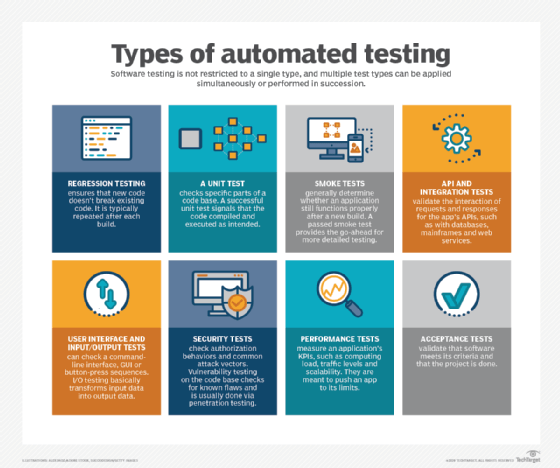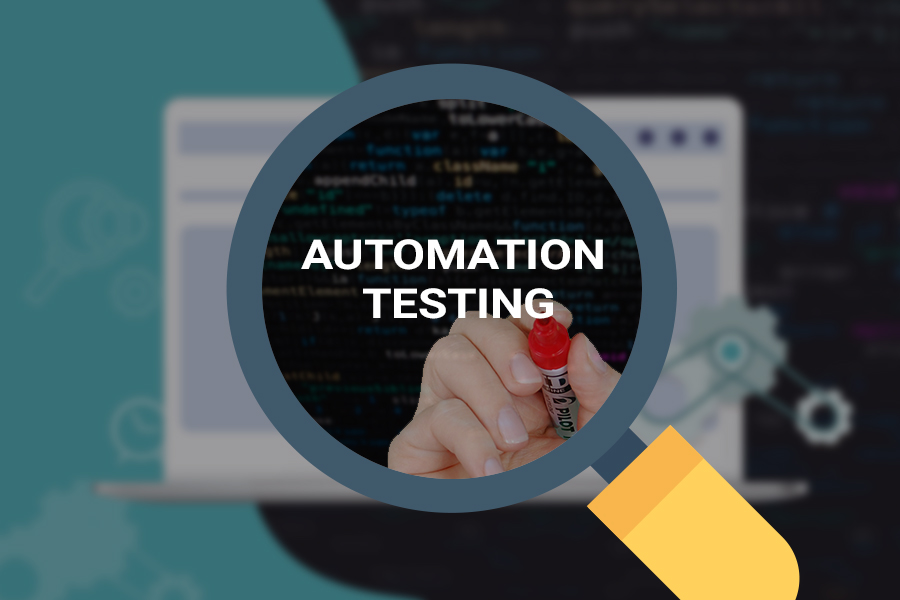Exploring the Future of Automation Testing in Software Application Advancement
Exploring the Future of Automation Testing in Software Application Advancement
Blog Article
From Guidebook to Automated Testing: A Comprehensive Overview to Transitioning Efficiently and Successfully
In the realm of software testing, the change from manual to automated processes has become an increasingly essential shift for organizations looking for to improve performance and precision in their testing techniques. As technology continues to development, the need for effective and seamless automated testing techniques has never ever been extra important. The journey from guidebook to automated testing is not without its difficulties, however when come close to strategically and with a clear strategy in mind, the benefits can be considerable - automation testing. In this extensive overview, we will explore vital actions and factors to consider crucial for an effective change, from the first selection of devices to the assimilation of automation into existing operations. Stay tuned to reveal the insights that will certainly assist lead the way for a smoother and much more efficient screening procedure.
Benefits of Automated Checking
Automated screening offers many advantages, boosting performance and accuracy in software program advancement processes. One primary advantage is the substantial decrease in testing time. Automated examinations can be run simultaneously on multiple devices and running systems, drastically speeding up the testing phase compared to hand-operated screening. This raised performance enables faster feedback on the high quality of the software, allowing developers to recognize and attend to concerns immediately.
Additionally, automated screening ensures a greater level of precision in identifying flaws. Uniformity in testing is likewise boosted, as automated tests carry out the exact same actions precisely each time they are run.
Choosing the Right Devices

First of all, examine your goals and requirements. Understand the scope of your task, the modern technologies entailed, and the capability of your group. This analysis will help you determine the attributes and capacities you need in your testing tools.
Second of all, take into consideration the compatibility of the devices with your existing systems and processes. Smooth assimilation with your present software application advancement lifecycle is necessary to guarantee a smooth transition to automation.
Additionally, evaluate the scalability and flexibility of the devices. As your screening needs evolve, the devices must be able to adapt and suit adjustments successfully.
Finally, factor in the assistance and neighborhood around the devices. Durable support and an energetic individual community can give useful resources and aid when carrying out automated testing. By very carefully thinking about these facets, you can choose the right tools that align with your demands and set the phase for an effective shift to automated testing.
Creating Effective Examination Manuscripts

When crafting test manuscripts, it is necessary to take into consideration the particular demands of the software being tested and guarantee that the scripts attend to all vital performances. Clear and detailed calling conventions for test manuscripts and test situations can read this post here improve readability and maintainability. Additionally, including error handling mechanisms within the test manuscripts can assist in recognizing and advice addressing issues without delay.
In addition, arranging test manuscripts into modular parts can enhance reusability and scalability, reducing redundancy and boosting efficiency in test manuscript upkeep. Routine reviews and updates to check manuscripts are vital to keep speed with advancing software application needs and functionalities. By complying with these concepts, testers can develop robust and reliable examination scripts that contribute considerably to the success of automated testing procedures.
Integrating Automation Into Workflows
By effortlessly integrating automated screening tools like Selenium or Appium right into the software application development lifecycle, groups can achieve faster responses on code modifications, leading to quicker bug discovery and resolution. This combination permits for continual testing throughout the advancement process, making sure that any type of issues are identified early on, resulting in greater software application quality. Correct assimilation of automation tools needs collaboration between development, testing, and operations groups to establish a unified process that maximizes efficiency and performance in supplying top quality software application items.
Ensuring a Smooth Shift
Successfully transitioning to automated testing includes careful preparation and mindful implementation to optimize and decrease interruptions performance in the software development process - automation testing. To make certain a smooth change, it is necessary to start by carrying out a complete analysis of the existing screening procedures and recognizing locations where automation can bring one of the most significant benefits. Involving with all stakeholders early on at the same time, including developers, testers, and project managers, is essential for garnering support and buy-in for the automation initiative
Communication is key during this transition stage. Clear interaction of the objectives, advantages, and expectations of automated testing assists to take care of any kind of resistance or problems that might emerge. In addition, supplying appropriate training and sources for team members to upskill in automation tools and strategies is essential for guaranteeing a successful transition.

Conclusion
To conclude, transitioning from handbook to automated testing uses many advantages, consisting of increased efficiency and reliability. By choosing the suitable tools, composing efficient examination manuscripts, and incorporating automation flawlessly his comment is here right into operations, companies can make certain a smooth and effective transition. It is vital to embrace automation as a valuable asset in software testing processes to boost total top quality and performance.
In the world of software application screening, the change from handbook to automated procedures has become an increasingly vital transition for organizations looking for to boost performance and precision in their testing practices. Automated tests can be run simultaneously on multiple tools and running systems, substantially speeding up the screening phase compared to hand-operated screening. Consistency in screening is also boosted, as automated examinations perform the same actions specifically each time they are run.To make certain the effective application of selected screening tools, the creation of effective test scripts plays a critical role in confirming the performance and performance of automated processes - automation testing. By adhering to these concepts, testers can create effective and durable test scripts that add substantially to the success of automated testing procedures
Report this page